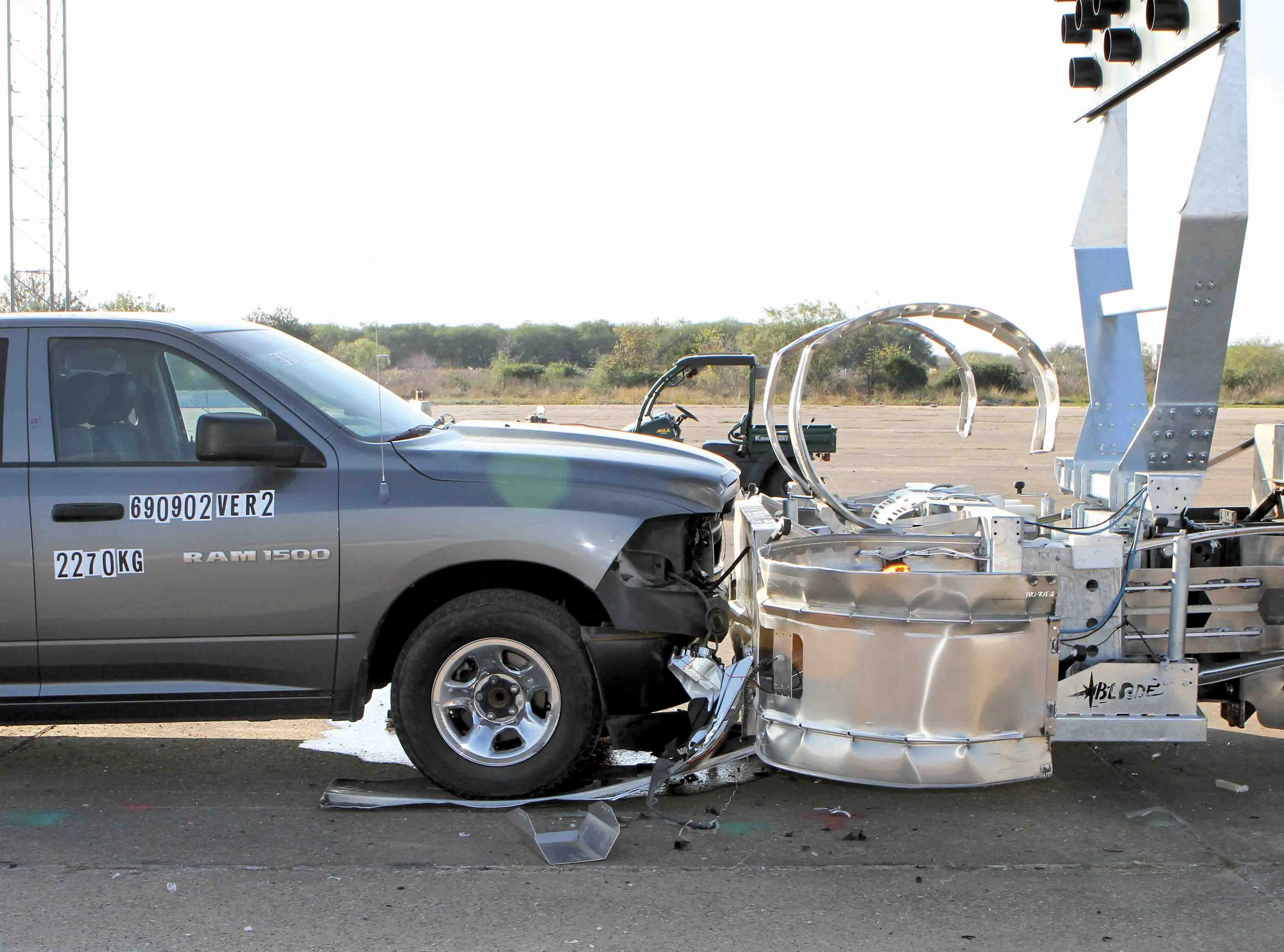The American Road & Transportation Builders Association (ARTBA) has honoured key engineering innovators into its Hall of Fame. These include the pioneer of urban interchange design, the Pennsylvania pioneer of the welded bridge concept, a former congressional transportation investment champion and a top US transportation engineering researcher and educator.
Launched in 2010, the Transportation Development Hall of Fame honours individuals or families from the public and private sectors who have made extra
October 7, 2015
Read time: 4 mins
The 920 American Road & Transportation Builders Association (ARTBA) has honoured key engineering innovators into its Hall of Fame. These include the pioneer of urban interchange design, the Pennsylvania pioneer of the welded bridge concept, a former congressional transportation investment champion and a top US transportation engineering researcher and educator.
Launched in 2010, the Transportation Development Hall of Fame honours individuals or families from the public and private sectors who have made extraordinary contributions to US transportation development during their careers. A committee of judges comprised of construction industry journalists annually reviews nominees in two categories.
One is for Transportation Design & Construction Industry Innovators and honours those who discovered or created a game changing product or process that advanced transportation design, construction and/or safety. It seeks to honour the original innovator. Those given recognition are T Wallace Hawkes (posthumously), past senior vice president and director of transportation of URS Corporation; Sanford H High (posthumously), founder of High Welding Company in Lancaster, Pennsylvania.
Meanwhile Transportation Design & Construction Industry Leaders recognises those who have made significant contributions—beyond just having successful businesses or careers—that have notably helped advance the interests and image of the transportation design, construction and safety industry. Those honoured are Dr C Michael Walton, the Ernest H. Cockrell Centennial Chair in Engineering at The University of Texas at Austin; and US Representative Jim Oberstar (D – Minn) (posthumously).
T Wallace Hawkes (1937-2014) is credited with originating the design and first application of the single point urban interchange, or SPUI, more than 40 years ago on State Route 60 in Clearwater, Florida. The innovation became widely used in cities across America, particularly in dense urban areas. Its key feature was an inverted left turn lane, which allowed left turns to be made simultaneously over or under a free flowing road and in a considerably smaller space. An additional space saving feature was the use of a single traffic signal to control the interchange compared to the two or more signals used at conventional interchanges.
Sanford H High (1907-1983) launched a small welding shop in Lancaster, Pennsylvania, in 1931. From its humble roots, High Welding Company pioneered the welded bridge concept, saving time and money for cash-strapped highway departments during the Great Depression. He convinced sceptical engineers that highway bridges presented a new frontier for welding instead of riveting. High's tenacity paid off during a 1933 experimental welded bridge project in York County, Pennsylvania.
Dr C Michael Walton was the first member of ARTBA’s Research & Education Division to be elected chairman of the board back in 2006. Now, he’s the first educator inducted into the Hall of Fame. Since joining The University of Texas at Austin in 1971, he has been a transformative figure. Dr Walton is a past chair of the Transportation Research Board executive committee, and founding member and a chairman of the Intelligent Transportation Society of America.
Jim Oberstar (1934-2014) was a congressional staffer and then a senior member of the US House of Representatives for over 40 years. Oberstar combined a strong knowledge of intermodal transportation issues with an ability to forge consensus among parties with divergent perspectives. The end result was a long, unmatched list of legislative achievements in the transportation arena. He served as chairman of the House Transportation & Infrastructure Committee from 2007-2010. He also was a driving force and author of historic federal highway, bridge, and public transportation investment laws in 1991, 1998 and 2005.
The 2014 Hall of Fame class, announced last November, included Horatio S Earle (posthumously), former Michigan highway commissioner, founder of the American Road Makers and the first to propose a network of interstate highways; and James D Pitcock, Jr, chief executive officer of Williams Brothers Construction Company in Houston.
Launched in 2010, the Transportation Development Hall of Fame honours individuals or families from the public and private sectors who have made extraordinary contributions to US transportation development during their careers. A committee of judges comprised of construction industry journalists annually reviews nominees in two categories.
One is for Transportation Design & Construction Industry Innovators and honours those who discovered or created a game changing product or process that advanced transportation design, construction and/or safety. It seeks to honour the original innovator. Those given recognition are T Wallace Hawkes (posthumously), past senior vice president and director of transportation of URS Corporation; Sanford H High (posthumously), founder of High Welding Company in Lancaster, Pennsylvania.
Meanwhile Transportation Design & Construction Industry Leaders recognises those who have made significant contributions—beyond just having successful businesses or careers—that have notably helped advance the interests and image of the transportation design, construction and safety industry. Those honoured are Dr C Michael Walton, the Ernest H. Cockrell Centennial Chair in Engineering at The University of Texas at Austin; and US Representative Jim Oberstar (D – Minn) (posthumously).
T Wallace Hawkes (1937-2014) is credited with originating the design and first application of the single point urban interchange, or SPUI, more than 40 years ago on State Route 60 in Clearwater, Florida. The innovation became widely used in cities across America, particularly in dense urban areas. Its key feature was an inverted left turn lane, which allowed left turns to be made simultaneously over or under a free flowing road and in a considerably smaller space. An additional space saving feature was the use of a single traffic signal to control the interchange compared to the two or more signals used at conventional interchanges.
Sanford H High (1907-1983) launched a small welding shop in Lancaster, Pennsylvania, in 1931. From its humble roots, High Welding Company pioneered the welded bridge concept, saving time and money for cash-strapped highway departments during the Great Depression. He convinced sceptical engineers that highway bridges presented a new frontier for welding instead of riveting. High's tenacity paid off during a 1933 experimental welded bridge project in York County, Pennsylvania.
Dr C Michael Walton was the first member of ARTBA’s Research & Education Division to be elected chairman of the board back in 2006. Now, he’s the first educator inducted into the Hall of Fame. Since joining The University of Texas at Austin in 1971, he has been a transformative figure. Dr Walton is a past chair of the Transportation Research Board executive committee, and founding member and a chairman of the Intelligent Transportation Society of America.
Jim Oberstar (1934-2014) was a congressional staffer and then a senior member of the US House of Representatives for over 40 years. Oberstar combined a strong knowledge of intermodal transportation issues with an ability to forge consensus among parties with divergent perspectives. The end result was a long, unmatched list of legislative achievements in the transportation arena. He served as chairman of the House Transportation & Infrastructure Committee from 2007-2010. He also was a driving force and author of historic federal highway, bridge, and public transportation investment laws in 1991, 1998 and 2005.
The 2014 Hall of Fame class, announced last November, included Horatio S Earle (posthumously), former Michigan highway commissioner, founder of the American Road Makers and the first to propose a network of interstate highways; and James D Pitcock, Jr, chief executive officer of Williams Brothers Construction Company in Houston.








